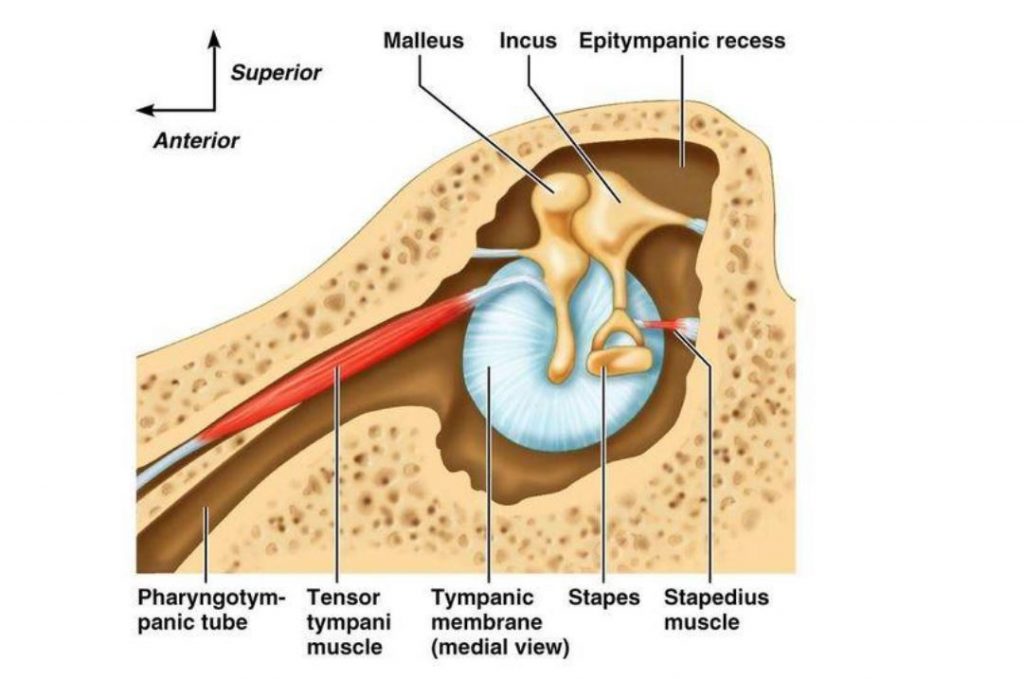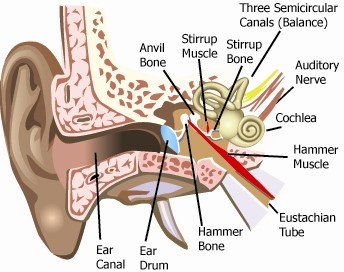4.1.5 What does the Middle Ear do?

The middle ear tunes and moderates the type of sound that reaches the inner ear.
The middle ear transmits sound from the outer ear to the inner ear. The sound is passed through the bridge formed by the ossicles (hammer, anvil and stirrup bones).

While doing this, it amplifies the sound vibrations as they progress from the ear drum to the oval window, which has a much smaller surface area.
This is similar to comparing the pressure of a flat shoe to the pressure delivered by a stiletto heel, where the pressure is concentrated on a much smaller area.
Through this process, the middle ear amplifies the sound by 23 times.
The increase in sound pressure is necessary because when sound vibrations pass from air into liquid, as in the inner ear, they have a lesser impact because liquid resists compression. This means that without the middle ear acting as amplifier, we would hear very little.

According to Dr Tomatis, the play of leverage between the bones, tendons and muscles within the middle ear have the role of subtly adjusting and tuning the ear to affect the type of sounds that reach the inner ear. Since our brain sends messages to our muscles, via our nervous system, our brain is constantly telling the ear whether to tune itself to be open and receptive, or whether to close down to certain sounds.
When looking at the middle ear, it is clearly set up as a set of levers and pulleys. Movement of the muscles alters the tension and angle of the ear drum, plus the pressure of the footplate of the stirrup on the oval window.

